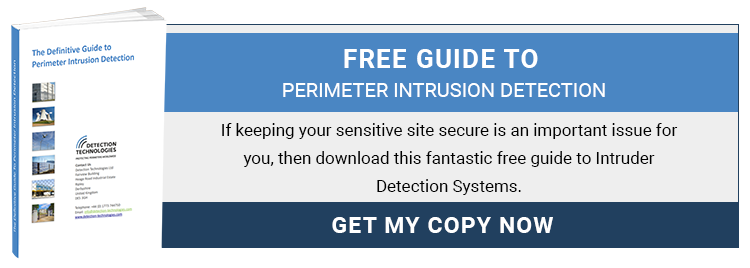.jpg?width=800&name=What%20to%20consider%20when%20buying%20an%20intrusion%20detection%20product%20(3).jpg)
When deciding which perimeter intrusion detection (PIDS) system to buy, a lot depends on just how security conscious you are aiming to be, and how determined you are to protect the entire external environment around your property.
Here are a few essential “Dos and Don’ts” to help you to find the right type and configuration of PID.
Do Take Time To Map It Out
This is a substantial investment and needs to be a wholly reliable and durable solution. Map out the site carefully and find the right level of equipment for complete security, but also commission installers who know their stuff.
Don’t Take Shortcuts
As with any technological solution, there are shortcuts. There are also installers who can “cobble something together”. This could include CCTV cameras and motion sensors periodically erected along your fence in an attempt to catch intruders. Of course, this risks the possibility of blind spots or imagery and audio feeds that are unintelligible.
Do Consider Using Vibration Sensors Throughout
If you want to be assured that no intruder can breach your systems, investing in the latest PID, including sensitive vibrational sensors along your entire fence, is common sense.
Qualified Installer
Use a qualified installer who, ideally, has been on a manufacturers training course and has a certificate of proficiency relevant to the chosen system to ensure its efficacy and configuration are fully optimised.
Don’t Forget Peripheral Details
When planning out the ideal configuration of perimeter security, consider the entire landscape. This includes topographical features, and any plant life on the ground or overhanging your fence. You need to be sure nothing will interfere with effectiveness.
Don’t Overlook Security Profile
The mere presence of intrusion detection equipment works as a deterrent! However, some organisations or property owners prefer a more covert approach and find it more useful to configure discrete perimeter security systems.
Do Buy For Integration And Control
You also need to plan out your intrusion detection system in terms of whether you can successfully integrate it with any existing security equipment you use, such as security gates and CCTV cameras. Does your chosen configuration work well with other alarm systems you operate on your site? Can everything be fed to a centralised monitoring site effectively?
Don’t Forget Invisible Threats
Buying the right perimeter intrusion product also means considering the potential for any invisible interference that may affect the functionality of your equipment. Is there anything on your site that could represent an electromagnetic challenge? This is sometimes an issue on energy and oil processing sites, for example.
Plan Personnel
Lastly, you need to consider the personnel on site. The right perimeter intrusion detection equipment provides excellent and unfailing signal quality and can pick out vibrational variations on a minute scale. Is your control team trained and ready to quickly act when this sensitive and effective security system detects the slightest threat of intrusion?





